| Conquest of Ethiopia:
Publisher’s Preview
By Mike Bennighof, Ph.D.
November 2019
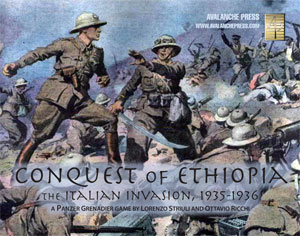 As soon as I saw the submission for the game that became Conquest of Ethiopia, I knew I wanted to publish it. Actually I’d wanted to publish it long before Ottavio Ricchi told me that he and his design partner, Lorenzo Striuli, wanted to work up a game on the topic. Panzer Grenadier has covered a wider array of topics than any other tactical game system in the history of forever, probably more than all of them put together, and I’d like to keep it that way. As soon as I saw the submission for the game that became Conquest of Ethiopia, I knew I wanted to publish it. Actually I’d wanted to publish it long before Ottavio Ricchi told me that he and his design partner, Lorenzo Striuli, wanted to work up a game on the topic. Panzer Grenadier has covered a wider array of topics than any other tactical game system in the history of forever, probably more than all of them put together, and I’d like to keep it that way.
Italy’s unprovoked 1935 invasion of Ethiopia makes for a fascinating study in wargame form: African history was my minor field in graduate school, and I’ve always taken a keen interest in this conflict. Panzer Grenadier was designed with the role of infantry at the forefront. So while the game system handles huge sweeping armored engagements very well, it’s also really good portraying battles on foot. And in Ethiopia, there are very few tanks to be seen.
Ottavio and Lorenzo submitted the game as an expansion book, with a full sheet of pieces for the Ethiopian armies and a few Italians, and drawing on a number of other games for the rest of the Italian order of battle and the maps. I don’t want to publish that sort of expansion any more, and asked series developer John Stafford to turn it into a complete boxed game.
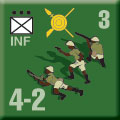 The result was exactly the game I hoped to see. John designed eight new maps for the scenarios, and all have Guy Riessen’s fine artwork. They cover a wide variety of terrain, and it’s not exactly what you might expect. Well, most of the maps are: hills, rocky ground, some more rocky ground. But this is Ethiopia in 1935, not 2014: since the early 1960’s, Ethiopia has lost 98 percent (yes, ninety-eight percent) of its forests to coffee plantations, irresponsible firewood cutters, idiotic collective farm schemes, explosive population growth, pitiless drought (as productivity declines, farmers clear more land in a doomed attempt to make up the shortfall) and climate change. The last forests, and with them the Earth’s last populations of wild Arabica coffee, are not expected to last another two decades. The result was exactly the game I hoped to see. John designed eight new maps for the scenarios, and all have Guy Riessen’s fine artwork. They cover a wide variety of terrain, and it’s not exactly what you might expect. Well, most of the maps are: hills, rocky ground, some more rocky ground. But this is Ethiopia in 1935, not 2014: since the early 1960’s, Ethiopia has lost 98 percent (yes, ninety-eight percent) of its forests to coffee plantations, irresponsible firewood cutters, idiotic collective farm schemes, explosive population growth, pitiless drought (as productivity declines, farmers clear more land in a doomed attempt to make up the shortfall) and climate change. The last forests, and with them the Earth’s last populations of wild Arabica coffee, are not expected to last another two decades.
At the time of the Italian invasion, about 35 percent of Ethiopia was forested. So there are quite a few woods hexes on several of the Conquest of Ethiopia maps; two of them are heavily wooded. On those lovely maps, you’ll be playing forty (40!) scenarios, ranging from the Wal Wal Incident of December 1934 that led directly to the war to the end of organized resistance in January 1937.
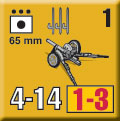 There are no tank battles, but the fighting’s still intense. The Ethiopians are severely lacking in the technology of war (artillery, air power, armor) but they usually have morale fairly close to that of their enemies and, at times, superior. It should be noted that in most scenarios, neither side is all that enthusiastic. Some of the scenarios are very large; the biggest uses six maps and pits 56 Ethiopian infantry platoons against 39 Italian Colonials backed by a very small artillery contingent. There are no tank battles, but the fighting’s still intense. The Ethiopians are severely lacking in the technology of war (artillery, air power, armor) but they usually have morale fairly close to that of their enemies and, at times, superior. It should be noted that in most scenarios, neither side is all that enthusiastic. Some of the scenarios are very large; the biggest uses six maps and pits 56 Ethiopian infantry platoons against 39 Italian Colonials backed by a very small artillery contingent.
Lorenzo and Ottavio have constructed a compelling narrative of the war, woven through the scenarios – Lorenzo is a first-rate historian, as you can see in his series on the use of chemical weapons in the Ethiopian War, and Ottavio certainly knows Panzer Grenadier scenario design. Strong game design in this series emphasizes narrative flow; that’s why the best games in this series have large numbers of scenarios, so the story of what happened in the war or campaign can unfold through them. A dozen scenarios gathered randomly from various aspects of the campaign won’t tell that story, won’t let the game function as a work of history.
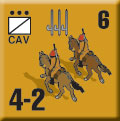 A huge number of scenarios by itself does not create a narrative, as some of our earlier games show. The old Eastern Front tops the list with 112 scenarios, and there are some nice stories nestled within, like the Volokolamsk Highway set. But there is not an over-arching story line that ties the full set of 112 together. And a small number of scenarios, if well-focused, can tell a pretty good story too; “a little bit of everything” does not. A huge number of scenarios by itself does not create a narrative, as some of our earlier games show. The old Eastern Front tops the list with 112 scenarios, and there are some nice stories nestled within, like the Volokolamsk Highway set. But there is not an over-arching story line that ties the full set of 112 together. And a small number of scenarios, if well-focused, can tell a pretty good story too; “a little bit of everything” does not.
The new Fourth Edition rules make that storytelling even easier. They’re fun to play with, with the full-color play-aids and all, and take the previous edition’s mantra of letting players fight the battles rather than the rules very seriously. You’ll be moving pieces across those forested maps within minutes of opening the box.
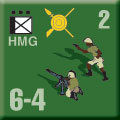 And the pieces are very nice: our new silky-smooth die-cut pieces we’ve been using for a while now. They have, as our name for them suggests, a very smooth and silky finish. But even better, they're die-cut with a new process that uses dangerously sharp blades (they can’t be handled directly by human hands or they’ll slice your fingers right off just by touching them) and therefore far less pressure when they cut through the sheet. That eliminates the bathtub-like depression left in the middle of playing pieces die-cut the old-fashioned way. The printing is extraordinarily crisp as well, showing off both images and colors extremely well. And these pieces are a colorful lot in Conquest of Ethiopia. And the pieces are very nice: our new silky-smooth die-cut pieces we’ve been using for a while now. They have, as our name for them suggests, a very smooth and silky finish. But even better, they're die-cut with a new process that uses dangerously sharp blades (they can’t be handled directly by human hands or they’ll slice your fingers right off just by touching them) and therefore far less pressure when they cut through the sheet. That eliminates the bathtub-like depression left in the middle of playing pieces die-cut the old-fashioned way. The printing is extraordinarily crisp as well, showing off both images and colors extremely well. And these pieces are a colorful lot in Conquest of Ethiopia.
Ethiopia fields three distinct armies, though they are often mixed together in scenarios. The Imperial Regulars are Ethiopia’s attempt at a modern army, with uniforms, modern rifles and a small allotment of machine guns, mortars and artillery. They do also field a small contingent of armored trucks, and did have a single platoon of ancient Italian-made tanks purchased in 1930 (which do not appear to have still been operable by 1935).
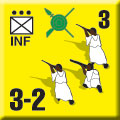 The Imperial Levies are irregular troops mobilized at the start of the conflict and at least partially equipped from the Empire’s stockpile of modern rifles (several hundred thousand Austrian-made Mannlicher straight-pull bolt-action rifles, purchased from Italy’s stocks of captured weaponry after the First World War). They wear the standard white cotton smock in which the East African man traditionally went to war. The Imperial Levies contain a few machine-gun platoons, but little else in the way of support weapons. The Imperial Levies are irregular troops mobilized at the start of the conflict and at least partially equipped from the Empire’s stockpile of modern rifles (several hundred thousand Austrian-made Mannlicher straight-pull bolt-action rifles, purchased from Italy’s stocks of captured weaponry after the First World War). They wear the standard white cotton smock in which the East African man traditionally went to war. The Imperial Levies contain a few machine-gun platoons, but little else in the way of support weapons.
The Provincial Levies, men called up by their local feudal lord (known as a Ras, often translated as “Duke”; Haile Selassie was Ras Tafari before seizing throne in 1930). The Provincial Levies have fewer modern arms – Haile Selassie was not about to let another ambitious Ras follow his own path to become Lion of Judah. They usually have low morale and are not that well-led – but there are a lot of them.
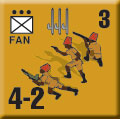 On the Italian side, the invaders rely heavily on their own professional native troops from Eritrea, Somalia and Libya. There are also Italian regulars (which include most of the tanks, engineers and artillery), Alpini and Carabinieri (Italy’s militarized national police force). Italy does not field a lot of armor, and what there is consists of L3 tankettes. This war is going to be fought between foot soldiers. On the Italian side, the invaders rely heavily on their own professional native troops from Eritrea, Somalia and Libya. There are also Italian regulars (which include most of the tanks, engineers and artillery), Alpini and Carabinieri (Italy’s militarized national police force). Italy does not field a lot of armor, and what there is consists of L3 tankettes. This war is going to be fought between foot soldiers.
While we’ve been trying to keep a tighter focus on our topic choices (more Americans, fewer Hyderabadis), I’m really pleased that we can continue to build Panzer Grenadier’s reputation for broad topic coverage.
Click here to order Conquest of Ethiopia!
Sign up for our newsletter right here. Your info will never be sold or transferred; we'll just use it to update you on new games and new offers.
Mike Bennighof is president of Avalanche Press and holds a doctorate in history from Emory University. A Fulbright Scholar and award-winning journalist, he has published over 100 books, games and articles on historical subjects.
He lives in Birmingham, Alabama with his wife, three children and his dog, Leopold.
|
